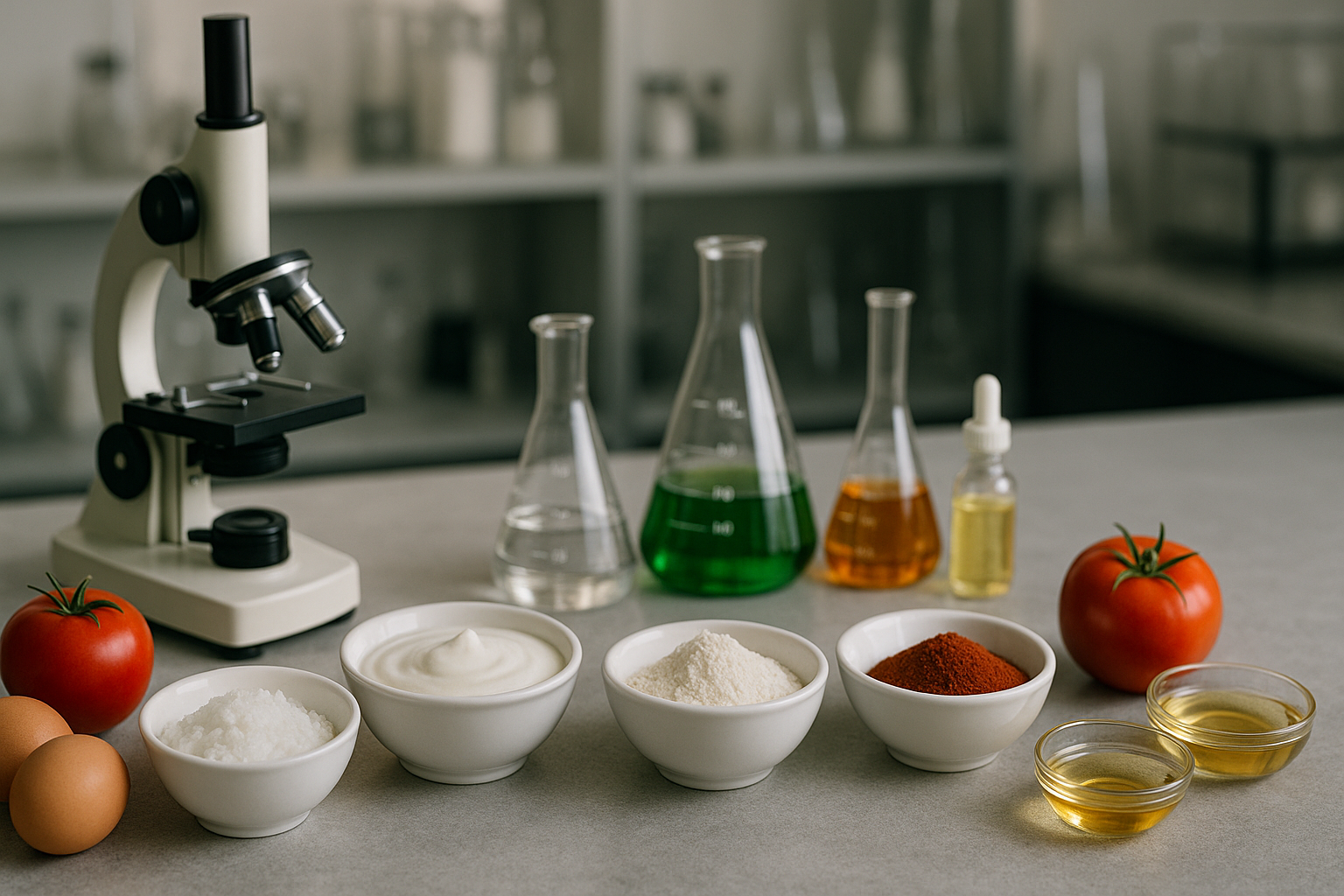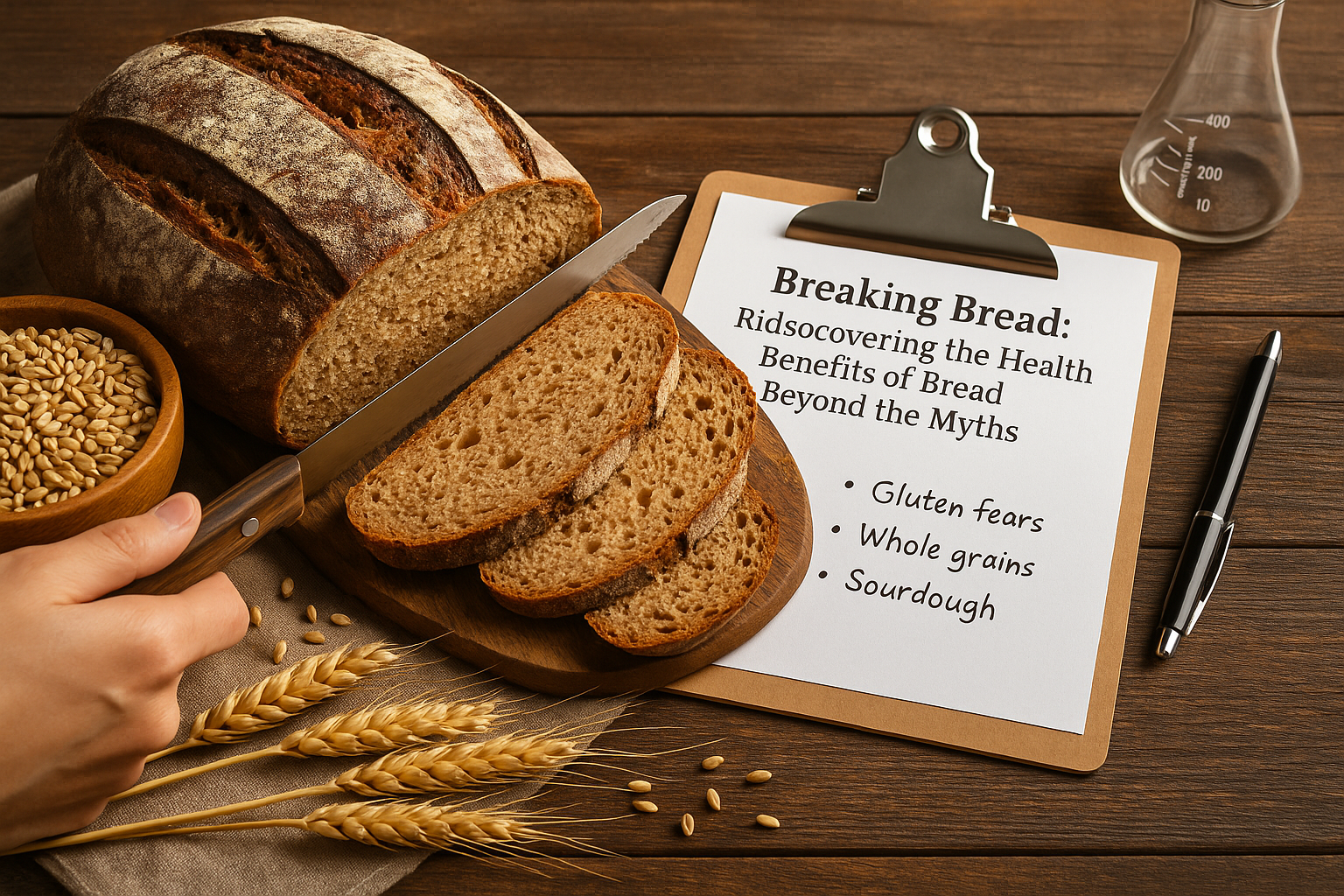
What Are Food Flavorings and How are they Created?
SUBSCRIBE TO OUR BLOG
Promotions, new products, and recipes.
Food flavorings are essential components in creating delicious and flavorful dishes. From savory to sweet, spices to herbs, flavorings play a crucial role in enhancing the taste of our favorite foods. But have you ever wondered how they are created?
Food flavorings come in various forms, including natural and artificial flavorings, as well as flavor enhancers. Natural flavorings are derived from natural sources, such as fruits, vegetables, herbs, and spices, while artificial flavorings are chemically synthesized compounds that mimic natural flavors.
Culinary and gourmet flavorings are other popular types of flavorings used in cooking. Culinary flavorings are those that are commonly used in everyday cooking, while gourmet flavorings are used to add a unique and sophisticated touch to dishes.
However, with the rise of food allergies and sensitivities, it's crucial to consider food flavoring safety and the categories they fall under. In this article, we will take a closer look at all these aspects of food flavorings in detail.
Key Takeaways
- Food flavorings come in various forms, including natural and artificial flavorings, as well as flavor enhancers.
- Culinary and gourmet flavorings are popular types of flavorings used in cooking.
- It's crucial to consider food flavoring safety and the categories they fall under.

Understanding Food Flavorings
Food flavorings are substances added to enhance or alter the taste of food and beverages. They can be natural, derived from plants or animals, or artificial, made through chemical processes. Flavor enhancers are specifically designed to intensify existing flavors. Natural flavorings include culinary flavorings, gourmet flavorings, savory flavorings, sweet flavorings, and spice flavorings, while artificial flavorings and flavor enhancers are used in a wide range of processed foods.
In understanding food flavorings, it's crucial to note that they do not necessarily add nutrition or calories to food. Instead, they create a sensory experience that impacts taste, aroma, and mouthfeel. For example, natural sweet flavorings like honey or maple syrup can add sweetness to baked goods or beverages, while natural spice flavorings like cumin or paprika can add spice and depth to savory dishes.
It's important to understand the differences between natural and artificial flavorings, as they can have varying impacts on health and safety. Natural flavorings are typically considered safe, but certain sources or extraction processes can pose health risks. Artificial flavorings, on the other hand, are created using chemical compounds and additives, which can have harmful effects if consumed in large quantities. Additionally, some artificial flavors may have a more intense taste and aroma, which can lead to overconsumption and adverse effects on health.
The use of flavor enhancers, particularly in processed foods, has been a topic of concern for some consumer groups. While flavor enhancers like monosodium glutamate (MSG) can create a savory taste in foods, they can also cause adverse reactions in some individuals. As a result, regulatory bodies like the FDA have established guidelines and safety assessments for food flavorings and flavor enhancers.
The Creation Process of Natural Flavorings
Natural flavorings are derived from natural sources, such as fruits, vegetables, herbs, and spices. These ingredients not only add flavor but also provide nutritional value to the food. Culinary and gourmet flavorings are made using natural ingredients.
The process of creating natural flavorings starts by identifying the source of the flavor and selecting the ingredients based on their flavor profile. The ingredients are then processed to extract the desired flavor. The extraction methods vary depending on the ingredient; some require heat, while others require a solvent or enzyme.
After extracting the flavor, it is often concentrated to increase its potency and to remove any unwanted components. The extract can then be blended with other ingredients to create the desired flavor profile.
To ensure the safety of natural flavorings, manufacturers follow strict regulations set by the FDA. These regulations determine the maximum level of a flavoring substance that can be used in a food product to ensure consumer safety.
| Culinary Flavorings | Gourmet Flavorings |
|---|---|
| Used in everyday cooking | Used in high-end culinary creations |
| Examples include: garlic powder, onion powder, basil, oregano, and thyme | Examples include: truffle oil, saffron, rose water, and vanilla bean extract |
| Available at most grocery stores | Available at specialty food stores |
Whether you're using culinary or gourmet flavorings, natural flavorings can add depth and complexity to any dish.
The Science Behind Artificial Flavorings
Artificial flavorings are chemically synthesized compounds that mimic natural flavors. They are a result of various scientific processes and techniques, including the use of high-pressure reactors and gas chromatography.
Did you know? The use of artificial flavorings dates back to the late 19th century, when chemists began creating synthetic compounds to mimic natural flavors.
Flavor enhancers are a type of artificial flavoring designed to intensify existing flavors. Monosodium glutamate (MSG) is an example of a flavor enhancer commonly used in Asian cuisines. Despite its popularity, MSG has been the subject of controversy due to claims of negative health effects.
The safety of artificial flavorings and flavor enhancers is a topic of concern for many consumers. However, the regulatory bodies responsible for ensuring food safety, such as the Food and Drug Administration (FDA), have deemed these compounds safe for consumption when used within specified limits.

"Artificial flavors are changing the way we eat," says Dr. Thomas Lawrence, a food scientist at the University of California - Davis. "They allow us to create new and exciting flavor profiles, without relying on natural ingredients that may be limited or expensive."
Savory Flavorings for Culinary Delights
Savory flavorings add depth and richness to a wide range of culinary creations. These flavorings are commonly used in savory dishes and well-loved by food enthusiasts worldwide. Let's explore some of the most popular savory flavorings used in culinary delights:
| Flavoring | Description |
|---|---|
| Garlic | A pungent flavoring used in many cuisines |
| Onion | A flavorful addition to sauces, soups and stews |
| Herbs | A variety of herbs including rosemary, thyme, and basil can add depth to savory dishes. |
| Soy Sauce | A common flavoring in Asian cuisine, it adds a salty, savory taste to dishes |
| Miso Paste | A traditional Japanese flavoring made from fermented soybeans, it adds a rich umami flavor |
Culinary flavorings like savory flavorings can elevate a dish and bring it to life. They can be used in various types of cuisines, from Asian to European and American cuisines, and can be found in different forms such as dried, fresh, or powdered. By understanding these flavorings, you can create culinary delights that are sure to please your taste buds.
Sweet Flavorings for Irresistible Desserts
Sweet flavorings play a crucial role in making desserts irresistibly delicious. From classic vanilla extract to fruity essences, these flavorings add depth, sweetness, and complexity to baked goods and desserts. The right sweet flavoring can turn a simple treat into a delectable masterpiece.
Let's take a closer look at some popular sweet flavorings used in culinary creations:
| Flavoring | Description |
|---|---|
| Vanilla Extract | A classic sweet flavoring made by steeping vanilla beans in alcohol. It's a versatile ingredient used in a variety of recipes and blends well with other flavors. |
| Almond Extract | A nutty sweet flavoring made from almond oil or bitter almonds. It pairs well with chocolate and is a common ingredient in baked goods. |
| Lemon Extract | A tart and sweet flavoring made by steeping lemon peel in alcohol. It's commonly used in desserts and pairs well with fruit flavors. |
| Raspberry Extract | A fruity sweet flavoring made from raspberries. It's a perfect ingredient for non-baked desserts like puddings or ice cream. |
Culinary flavorings have come a long way, and today, we have a wide range of sweet flavorings to choose from, including natural and artificial options. They offer endless possibilities for culinary creations, and their significance in making desserts scrumptious cannot be overstated.
Spice Flavorings for Culinary Adventures
Spices have been traded across the globe for centuries, and their use in culinary creations is widespread. Spice flavorings play an essential role in elevating the taste of dishes, adding aromatic layers of flavor and depth. From Indian curries to Mexican salsas, spices are versatile natural flavorings used widely in global cuisine.
Each spice has a unique flavor profile, ranging from robust and earthy to sweet and floral. Understanding how to use spices can transform a dish from ordinary to extraordinary. Knowing which flavors pair well with each other is crucial in creating a harmonious blend of flavors. For example, cumin and coriander work well with meat dishes, while cinnamon and nutmeg enhance the taste of baked goods.
| Spice Name | Flavor Profile | Culinary Uses |
|---|---|---|
| Cinnamon | Sweet, warm, and slightly floral | Used in baked goods, sweet sauces, and drinks |
| Cumin | Earthy and nutty | Used in Indian, Middle Eastern, and Mexican cuisine |
| Cayenne Pepper | Spicy and pungent | Used in spicy dishes and sauces |
| Turmeric | Earthy and slightly bitter | Used in Indian and Middle Eastern cuisine |
| Coriander | Citrusy and slightly sweet | Used in curry blends, meat dishes, and sauces |
| Paprika | Sweet and smoky | Used in marinades, seasoning blends, and soups |
When using spice flavorings, it's important to use them in moderation. Overusing a spice can overpower the dish, causing an unpleasant taste. Freshness is also crucial when it comes to using spice flavorings. Store spices in a cool, dry place, away from direct sunlight.
In conclusion, spice flavorings are an essential component in global cuisine. From cinnamon to turmeric, each spice brings a unique flavor profile that contributes to a dish's overall taste. Understanding how to use spice flavorings and pairing them with the right ingredients allows us to create culinary adventures that are satisfying and enjoyable.
Categorizing Food Flavorings
Food flavorings can be categorized into three main categories: savory flavorings, sweet flavorings, and spice flavorings. Each category has a unique role in enhancing the taste of food and beverages.
Savory Flavorings
Savory flavorings are used to enhance the taste of savory dishes. These flavorings include ingredients such as meat extracts, soy sauce, Worcestershire sauce, and vegetable extracts. They add depth and richness to soups, stews, and gravies.
Sweet Flavorings
Sweet flavorings are used to add sweetness and depth to desserts and sweet treats. These flavorings include ingredients such as vanilla extract, almond extract, fruit essences, and chocolate flavoring. They enhance the taste of cakes, cookies, and ice cream.
Spice Flavorings
Spice flavorings are used to add aroma and flavor to dishes. These flavorings include ingredients such as cinnamon, nutmeg, cumin, and paprika. They create unique flavor profiles in curries, sauces, and marinades.

Understanding the different categories of food flavorings can help us create unique and delicious culinary creations. Whether we're creating a savory soup, a sweet dessert, or a spiced marinade, flavorings play a crucial role in enhancing the taste experience.
Safety Considerations of Food Flavorings
When it comes to food flavorings, safety should always be a top priority. The safety of flavorings is heavily regulated by various authorities to ensure that they do not pose any risks to consumers' health.
Regulatory bodies, such as the U.S. Food and Drug Administration (FDA), closely monitor the use of flavorings in food and beverage products. Before a flavoring can be used in a product, it must first undergo an evaluation process to determine its safety. This evaluation includes assessing the potential risks associated with the flavoring, such as allergic reactions or toxicity.
The FDA also regulates the use of certain flavorings that have been linked to health concerns, such as diacetyl, a flavoring often used in popcorn. Diacetyl has been linked to respiratory issues when inhaled, so the FDA has set limits on how much diacetyl can be used in food products.
Manufacturers of food flavorings must also adhere to strict safety guidelines and quality control protocols to ensure that their products are safe for consumption. This includes conducting regular testing to maintain the purity and integrity of their flavorings.
Consumers can also take steps to ensure the safety of food flavorings. It is important to carefully read ingredient labels and look for any potential allergens. If you have any concerns about specific flavorings or their safety, consult with a healthcare professional or contact the manufacturer directly.
"When it comes to food flavorings, safety should always be a top priority."
Overall, the safety considerations of food flavorings cannot be overstated. By understanding the regulations surrounding their use and taking appropriate precautions, we can enjoy the delicious taste enhancements that flavorings provide while also protecting our health.
Exploring the Impact of Food Flavorings
Food flavorings play a crucial role in our enjoyment of different foods and beverages. Flavor enhancers, such as monosodium glutamate (MSG), are often used to intensify existing flavors and create a more satisfying taste experience.
Studies have shown that flavor enhancers like MSG can alter our perception of taste and aroma, boosting their overall impact on our senses. This enhances our enjoyment and makes us more likely to eat more of the food.
However, it's important to note that not all food flavorings are created equal. Some artificial flavorings and enhancers may have negative health impacts when consumed in excessive amounts. For example, certain flavor enhancers have been linked to headaches, nausea, and other health issues.
It's important to be aware of the ingredients in your food and how they might impact your health. When selecting food flavorings, it's essential to choose high-quality options that are safe for consumption. This includes natural flavorings derived from real foods and minimally processed artificial flavorings that have been approved by regulatory bodies.
Overall, food flavorings have a significant impact on our taste experiences and culinary adventures. From enhancing specific flavors to creating entirely new tastes, flavorings play a crucial role in the food industry. By understanding their impact and making informed choices, we can enjoy delicious meals that are both enjoyable and safe to eat.
Conclusion
Food flavorings are an integral part of our culinary adventures, and their impact on the overall taste experience cannot be ignored. From savory to sweet to spice flavorings, each category has a unique role to play in creating exquisite dishes. Understanding the creation process and safety considerations of flavorings can help us make informed choices and appreciate their value.
As culinary innovation continues to evolve, flavor enhancers and food flavorings will be an exciting area to explore. With a wide range of flavorings available, there is no limit to the taste profiles that can be created. So, let's savor the flavors, experiment with culinary creations, and enjoy the delicious world of food flavorings.
FAQ
What are food flavorings?
Food flavorings are substances added to enhance or alter the taste of food and beverages.
How are food flavorings created?
Food flavorings can be natural, derived from plants or animals, or artificial, made through chemical processes.
What are flavor enhancers?
Flavor enhancers are specifically designed to intensify existing flavors.
What are natural flavorings?
Natural flavorings are derived from natural sources, such as fruits, vegetables, herbs, and spices.
How are culinary flavorings created?
Culinary flavorings are made using natural ingredients and are specifically designed for use in the culinary world.
What are the different categories of food flavorings?
Food flavorings can be categorized as savory, sweet, or spice flavorings.
Are artificial flavorings safe to consume?
Artificial flavorings are subject to safety regulations and assessments to ensure consumer well-being.
How do savory flavorings enhance culinary delights?
Savory flavorings add depth and richness to savory dishes, such as broths and seasonings.
How do sweet flavorings contribute to desserts?
Sweet flavorings add sweetness and depth to desserts and sweet treats, such as vanilla extract and fruit essences.
What role do spice flavorings play in culinary adventures?
Spice flavorings, including aromatic herbs and exotic spices, contribute to unique flavor profiles in various cuisines.
How are food flavorings regulated for safety?
Regulatory bodies assess and regulate food flavorings to ensure their safety.
How do food flavorings impact the taste of food?
Food flavorings amplify the taste, aroma, and overall perception of food, enhancing the overall culinary experience.


|
About the Author Ed is the founder of Cape Crystal Brands, editor of the Beginner’s Guide to Hydrocolloids, and a passionate advocate for making food science accessible to all. Discover premium ingredients, expert resources, and free formulation tools at capecrystalbrands.com/tools. — Ed |
Enjoyed this post? Subscribe to The Crystal Scoop
Food-science tips, ingredient know-how, and recipes. No spam—unsubscribe anytime.
- Choosing a selection results in a full page refresh.



